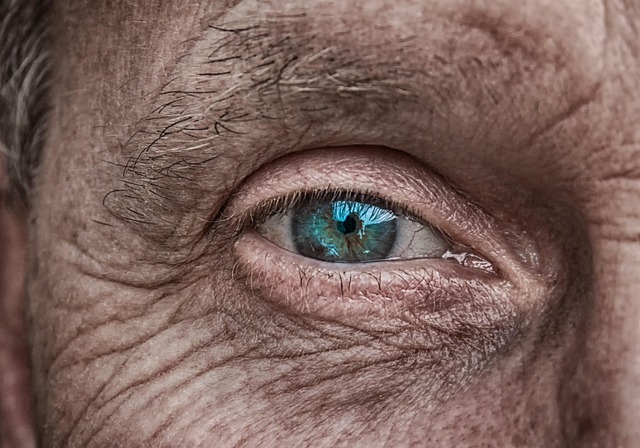Skin tags, caused by friction or genetics, are commonly removed for cosmetic reasons in Glasgow. Home remedies like apple cider vinegar, castor oil, duct tape, tea tree oil, or tweezers offer gentle options but require patience. More severe cases may need professional treatment, such as cryosurgery or surgical excision from trained specialists, providing long-lasting results. Preventing recurrence involves keeping the area clean, avoiding irritation, and using protective barriers to inhibit new growth.
Looking to get rid of those pesky skin tags at home? This comprehensive guide explores everything you need to know about Glasgow skin tag removal. We’ll delve into the causes and types, uncover effective home remedies for safe and natural removal, and provide insights into medical procedures and professional treatments available in Glasgow. Plus, learn valuable tips to prevent recurrence and proper care after removal.
- Understanding Skin Tags: Causes and Types
- Home Remedies for Safe Removal
- Medical Procedures and Professional Treatments
- Preventing Recurrence: Tips and Care After Removal
Understanding Skin Tags: Causes and Types
Skin tags, also known as acrochordons, are small, soft skin growths that typically appear on the neck, armpits, groin, or other areas where skin rubs against itself. They are generally harmless and often painless, but some people prefer to remove them for cosmetic reasons. Understanding their causes is essential when considering Glasgow Skin Tag Removal options.
There are various types of skin tags, including those that form due to friction or trauma to the skin. Common causes include clothing irritation, over-extending or pinching the skin, or even close contact with another person’s skin. Some individuals also have a genetic predisposition to developing skin tags, making them more susceptible to having them appear on various parts of their body.
Home Remedies for Safe Removal
When considering home remedies for Glasgow skin tag removal, it’s essential to opt for safe and gentle methods that won’t cause irritation or scarring. Some popular options include using a mixture of apple cider vinegar and castor oil, which can soften and eliminate tags over time. Another effective remedy involves applying a thick layer of duct tape, leaving it for several days, and then gently removing the dead skin.
Herbal treatments like tea tree oil, known for its antimicrobial properties, can help disinfect the area and promote healing. Additionally, using a loop or tweezers sterilized with rubbing alcohol to carefully snip off tags is another common approach. These at-home methods offer convenience but always require patience and careful consideration to avoid complications.
Medical Procedures and Professional Treatments
When considering skin tag removal at home, it’s essential to understand that while some methods are safe and effective for minor cases, more persistent or numerous tags might require medical intervention. In Glasgow Skin Tag Removal clinics, professionals offer various treatments tailored to address different skin types and concerns. One common procedure involves freezing off the tags with liquid nitrogen, a technique known as cryosurgery. This method is quick and often painless, making it a popular choice for many. Another approach is surgical excision, where a doctor gently removes the tag and seals the skin to prevent scarring.
Professional treatments provide several advantages over at-home remedies. They are performed by trained specialists who can ensure precise removal, reduce the risk of infection, and minimize potential scarring. Additionally, these treatments offer long-lasting results, making them a more sustainable solution for those dealing with stubborn or recurrent skin tags. Whether through cryosurgery or excision, Glasgow Skin Tag Removal clinics provide effective and safe options for those seeking to eliminate these small but sometimes bothersome growths.
Preventing Recurrence: Tips and Care After Removal
After successfully removing skin tags at home, preventing recurrence is key. Here are some simple tips to ensure your skin remains smooth and tag-free. First, maintain good hygiene by gently cleansing the affected area daily with mild soap and water. Avoid harsh scrubs or products that could irritate the skin. Secondly, keep the area dry and avoid excessive rubbing or scratching, as this can trigger new growth.
For ongoing care, consider using over-the-counter skincare products formulated to reduce inflammation and prevent skin tag formation. Applying a thin layer of petroleum jelly or a silicone-based product can also create a protective barrier. Additionally, if you notice any new tags forming, address them promptly using safe at-home methods to avoid the need for professional Glasgow Skin Tag Removal procedures in the future.
Skin tags can be a nuisance, but with the right approach, safe removal is achievable at home. While medical procedures like Glasgow skin tag removal offer swift solutions, understanding causes and employing preventive measures is key to long-term relief. Home remedies provide natural, gentle options, and proper post-removal care ensures tags don’t return. By combining these strategies, you can effectively manage skin tags, enjoying clear, comfortable skin without resorting to invasive treatments.
